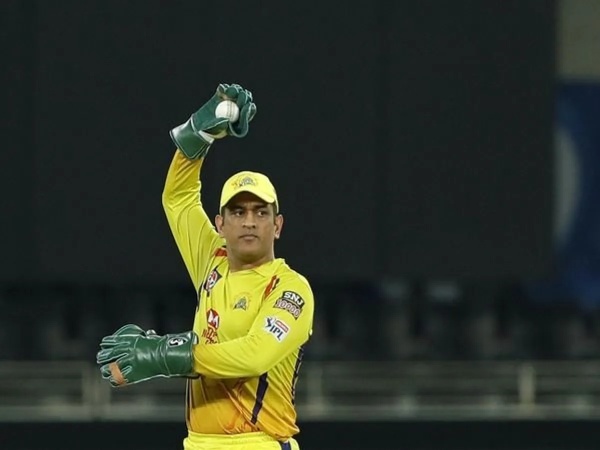views : 765
4 Min Read
Check out the top three MS Dhoni controversies
Mahendra Singh Dhoni, a legendary figure in Indian cricket, is widely regarded as one of the greatest captains in the sport’s history. Renowned for his calm and composed demeanor on the field, Dhoni's ability to maintain his poise under pressure and guide his team to victory in high-stakes situations has set him apart. Under Dhoni's leadership, India achieved remarkable success, securing three major ICC trophies: the 2007 T20 World Cup, the 2011 ODI World Cup, and the 2013 Champions Trophy. To this day, he remains the only captain to have won all three of these prestigious titles. Dhoni's strategic acumen and cool-headedness were instrumental in steering India to victory in these tournaments. In addition to these triumphs, he also guided the Indian team to the semifinals of the 2015 ODI World Cup and the 2016 T20 World Cup, further cementing his legacy as a leader.
Dhoni was celebrated for his exceptional finishing abilities with the bat, often delivering crucial performances in the closing stages of matches to secure victories for his team. Despite his popularity and success, Dhoni’s career was not without controversy, both on and off the field. As one of the most prominent athletes in the country, he occasionally faced scrutiny and challenges, but his leadership and resilience continued to shine through. Dhoni's impact on Indian cricket remains profound, and his contributions to the sport are remembered and celebrated by fans and players alike.
3 Biggest MS Dhoni controversies
1. Amrapali case
Between 2010 and 2014, the Amrapali Group proposed the construction of approximately 42,000 residential flats in the Greater Noida and Noida regions. The real estate company collected advances from interested buyers, ranging from 40 to 100 percent of the flat's value, before formal allotment agreements were registered. Amrapali had promised to complete these constructions within three years. However, due to delays and financial mismanagement, the buyers were forced to escalate the issue to the Supreme Court. The Court ordered a forensic audit of the Amrapali Group, which revealed that the company had allegedly diverted over INR 5,500 crore through various entities.
In 2016, MS Dhoni, who was previously a brand ambassador for Amrapali, became embroiled in controversy as buyers highlighted these issues. Consequently, Dhoni stepped down from his role as the group's brand ambassador. Recently, the Supreme Court revoked the Amrapali Group’s registration under the Real Estate (Regulation and Development) Act, highlighting the severity of the situation and the company's failure to adhere to regulations and fulfill its promises to the buyers.
2. IPL spot-fixing
One of the most significant controversies in Mahendra Singh Dhoni’s career was undoubtedly the 2013 spot-fixing scandal, which marred the reputation of the Chennai Super Kings (CSK) franchise. The scandal emerged when Gurunath Meiyyapan, the son-in-law of CSK’s owner N. Srinivasan, was investigated for his alleged connections with bookies. This led to intense scrutiny of CSK’s captain, Dhoni, who faced thorough questioning and was even accused of dishonesty by one of the lawyers involved in the case.
The same year, three players from the Rajasthan Royals (RR)—S. Sreesanth, Ajit Chandila, and Ankeet Chavan—were also implicated in spot-fixing allegations and subsequently banned from cricket. The scandal had severe repercussions for both franchises, resulting in the suspension of CSK and RR from the Indian Premier League (IPL) for two seasons, from 2016 to 2017. This suspension was a direct consequence of the extensive investigation and the need to address the integrity issues that surfaced during the investigation. The spot-fixing saga remains a dark chapter in the history of Indian cricket and had a notable impact on all parties involved.
3. Dropping senior players in CB series 2011-12
During the 2011-12 Commonwealth Bank ODI series in Australia, Dhoni reportedly made a surprising decision that shocked many within the team. He stated that Gautam Gambhir, Virender Sehwag, and Sachin Tendulkar could not all be included in the same playing XI due to their perceived lack of agility on the field. As a result, Gambhir and Tendulkar missed one match each, while Sehwag sat out three games. India struggled throughout the series, finishing with only three wins out of eight matches and failing to advance to the finals. Tendulkar and Sehwag had underwhelming performances, accumulating just 143 and 65 runs respectively during the series.
A few months later, Tendulkar retired from One Day Internationals, and both Sehwag and Gambhir were dropped from the squad due to poor form. In the following year, India made significant changes to their batting lineup, promoting Rohit Sharma to open the innings and Virat Kohli to number three. Shikhar Dhawan was also brought in to open alongside Rohit, marking a shift in India’s approach to the format.
